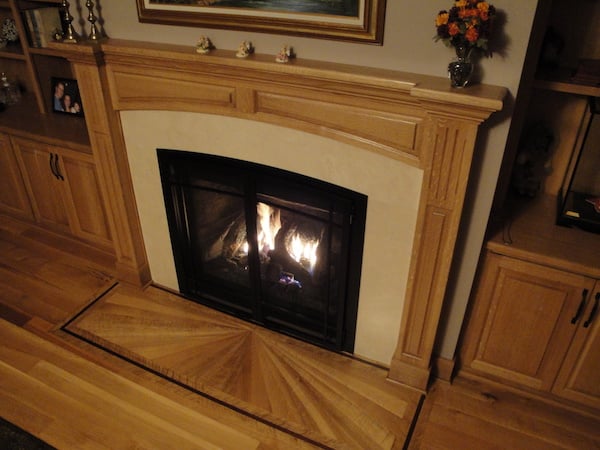
Nothing beats cozying up in front of a crackling fire on a brisk evening, but not all fireplaces are made equally. Depending on your type of home, your energy needs and your design preferences, you have many fireplace options to choose from today.
Masonry Fireplaces
New masonry fireplaces have come a long way since the days when they provided more ambience than warmth. Today’s models are much more energy-efficient and some European models can even heat an entire small home.
The cost of a masonry fireplace varies, depending on factors such as the type of material used (particularly on the fireplace face), the hearth (brick, stone, concrete, tile, marble or wood) and other factors such as chimney liners.
Gas Fireplaces
Housed in their own metal casing, gas fireplaces can be installed just about anywhere. Inside the fireplace are ceramic logs and a burner that produces a glowing natural gas-powered flame.
There are three different styles of gas fireplaces: the direct vent model, the top vent design, and the vent-free model.
The direct vent gas fireplace uses two pipes that lead directly to the outside. One pipe uses combustion air from the outside while the other vents the exhaust gas.
The top vent design can be installed into an existing fireplace and uses the metal or brick chimney as the exhaust vent. The combustion air for top vent fireplaces is drawn from inside the home.
The vent-free gas fireplace model uses no exhaust vent. This style includes an oxygen-depletion sensor that turns off the gas if it senses a dangerous lack of oxygen inside the house.
While fireplace manufacturers claim that vent-free fireplaces burn clean, are energy-efficient and don’t threaten indoor air quality, be aware that some states don’t permit the installation of vent-free fireplaces.
Prefabricated Fireplaces
Prefabricated fireplaces, also known as zero-clearance fireplaces, are highly insulated, so they can be installed within an inch of combustible materials, such as wall framing. They are preferred in new construction because they’re much lighter in weight, are faster and easier to install than standard masonry units, and are energy-efficient.
Many newer prefabricated fireplaces are prefabricated from metal and installed in wood-frame walls. They generally have a metal shell and a brick-lined firebox.
Ready to start your fireplace project?
Find ProsWood Stoves
A wood stove is essentially a metal container for a fire. Made from cast iron or brick-lined, welded plate steel, a wood stove has an inlet for combustion air and an outlet for combustion gases, or smoke.
Most modern stoves are airtight and allow the amount of combustion air that feeds the flame to be controlled. This control allows a wood stove to burn far more efficiently than a traditional open fireplace.
Wood stoves built during the 1970s and early 1980s offer efficiencies of 50 to 60 percent. Those built since new governmental requirements were put in place in 1988 offer 75 percent to 90 percent overall efficiency; that is, they convert up to 90 percent of their fuel into heat.
Concern about particulate emissions–the dangerous gases and toxins carried by wood smoke–have forced changes in design, too. Although old wood stoves gave off up to 50 grams of particulates per hour in smoke, new certified stoves give off only about 5 grams. Click here to read more about wood stoves.
Fireplace Inserts
If you enjoy using your masonry fireplace but don’t like the associated energy costs, you might want to consider purchasing a fireplace insert. An insert is basically a wood stove designed to fit into a conventional open fireplace.
Gas inserts consist of a gas log set installed into a steel or cast iron heat exchanger and are usually sealed on the front with glass. Many of these units have fans to move the heat, and are also available with remote controls, wall switches or wall-mounted thermostats.
Fireplace inserts are heavy, often weighing more than 400 pounds. Since wood-burning inserts need to be removed when the chimney is being cleaned and maintained, they can be awkward and heavy to handle. It is a job best left to a professional chimney sweep.
In some cases, however, you do not have to remove the insert to clean the chimney. The insert can stay in place during cleaning if you install a full relining collar, a stainless steel pipe that connects to the insert and goes to the top of the chimney.
You might need to purchase accessories such as a blower, glass door, or catalytic combustor to go with the insert.
Pellet-Burning Appliances
Pellet-burning appliances are simpler to operate and more convenient than other wood-burning appliances. In fact, they are almost as easy to use as gas, oil or electric heaters.
These stoves and inserts burn wood pellets–compressed wood that resembles rabbit food. Pellet-burning appliances rely on sophisticated computers and circuit boards to determine how much pellet fuel should be burned. Most models have at least two burn settings and some use thermostats to control the fire. They also use a forced-air system to distribute heat. Pellet-burning appliances are highly efficient and pollute very little.
Because these appliances burn wood so efficiently, some do not even need chimneys. Rather, they exhaust fumes through a small hole in the wall to the outdoors. Pellet-burning appliances need to be refueled less frequently than most other wood-burning appliances. Refueling varies from once a day to twice a week, depending on the model and your heating needs.
Customizing Your Fireplace
Just as when you buy a car, fireplaces can be customized with a variety of options.
Gas fireplaces, for instance, feature three different kinds of logs: vented logs that provide a realistic burning wood look with less heat; ventless logs, which produce a yellow flame with a high degree of efficiency; and partially vented logs which provide a middle ground option in warmth, appearance and efficiency.
Other options for fireplaces can include a matching tile hearth, etched glass face or even a remote control for couch potato fire starters.
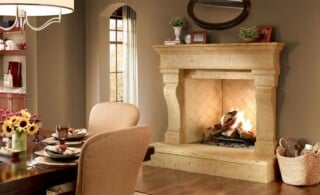 Turn Your Fireplace into a Work of Art with a Fireplace Surround
Turn Your Fireplace into a Work of Art with a Fireplace Surround 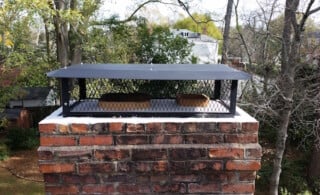 Preventive Maintenance: Chimneys
Preventive Maintenance: Chimneys 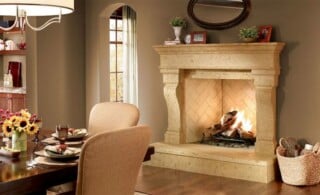 Chimney Bombs
Chimney Bombs 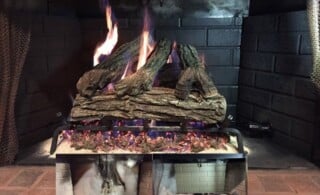 Upgrading Your Fireplace
Upgrading Your Fireplace 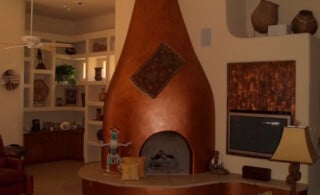 Add Southwestern Feel with a Kiva Fireplace
Add Southwestern Feel with a Kiva Fireplace 

Great article, and all valid points to consider. I would mention however, that if people are shopping for fireplaces, one additional type to consider is electric fireplaces.
While they don’t have the authentic charm of a wood fireplace, or the full heat output of a gas or pellet unit, they do come with their own unique advantages:
-more energy efficient than any other option
-plug directly into a standard household outlet, no need for venting or safety concerns
-can be used with or without heat if you’re just looking to create ambiance
There’s obviously much more to consider, but if you want more info on electric fireplaces a good resource is https://electricfireplaceshop.com